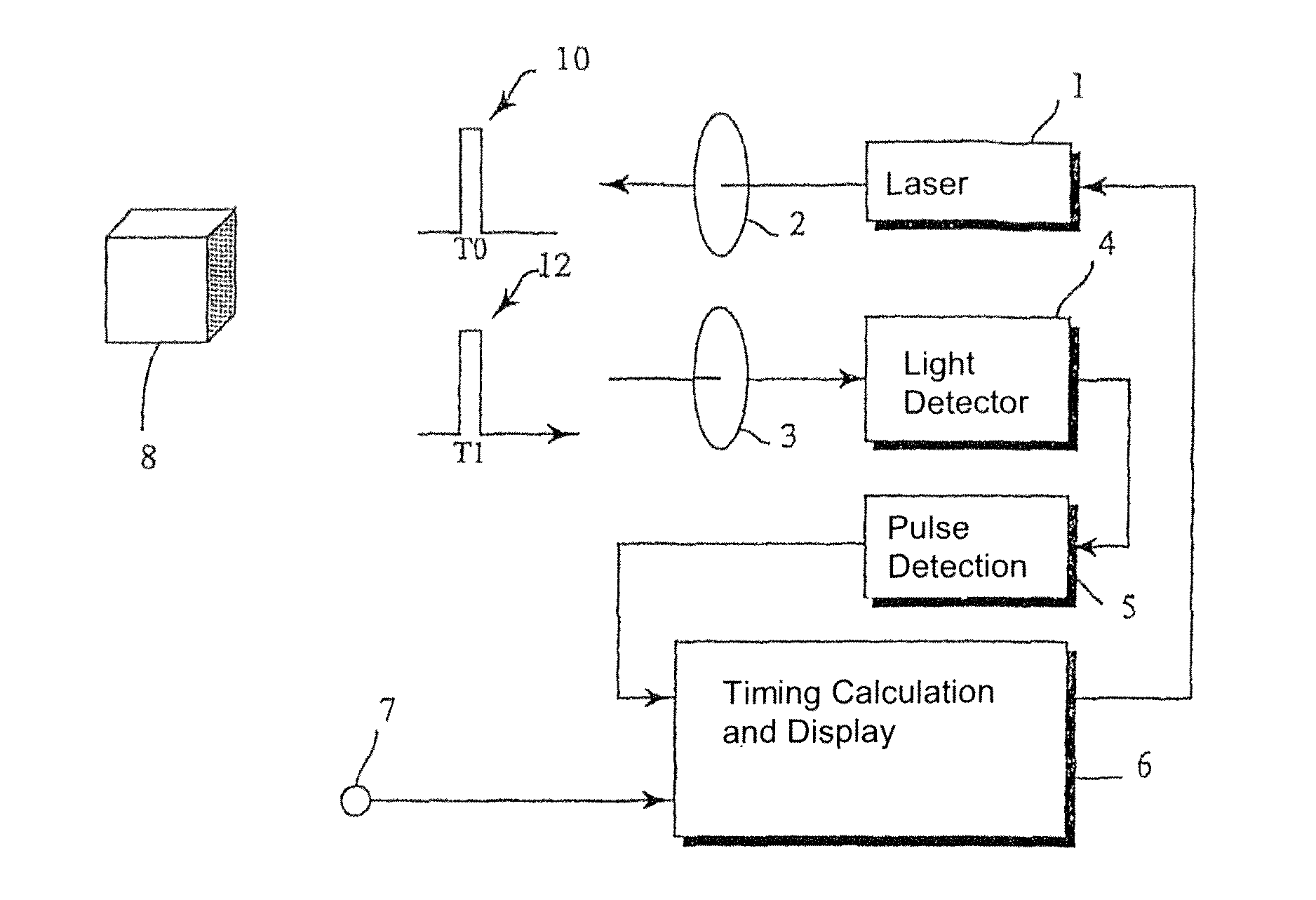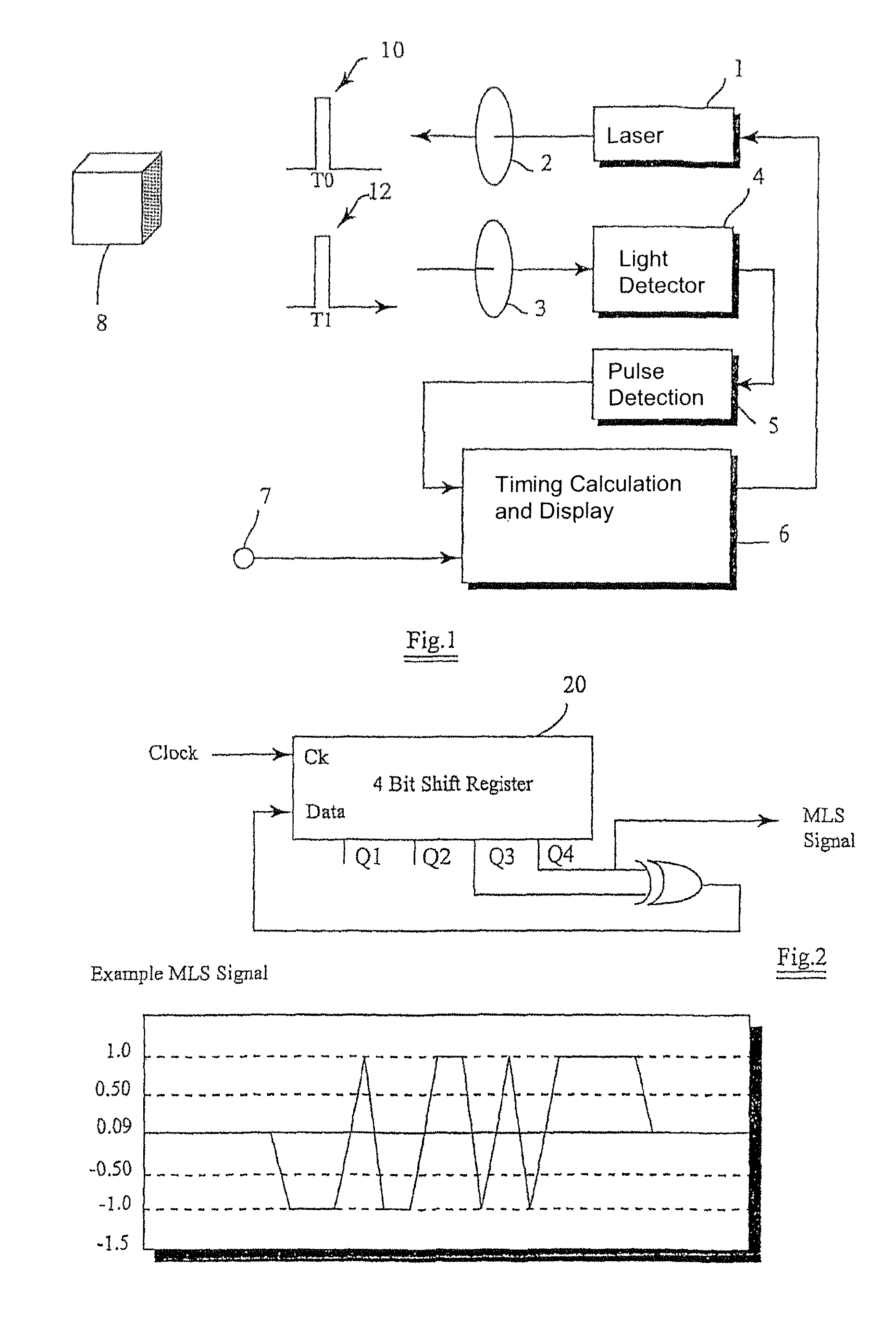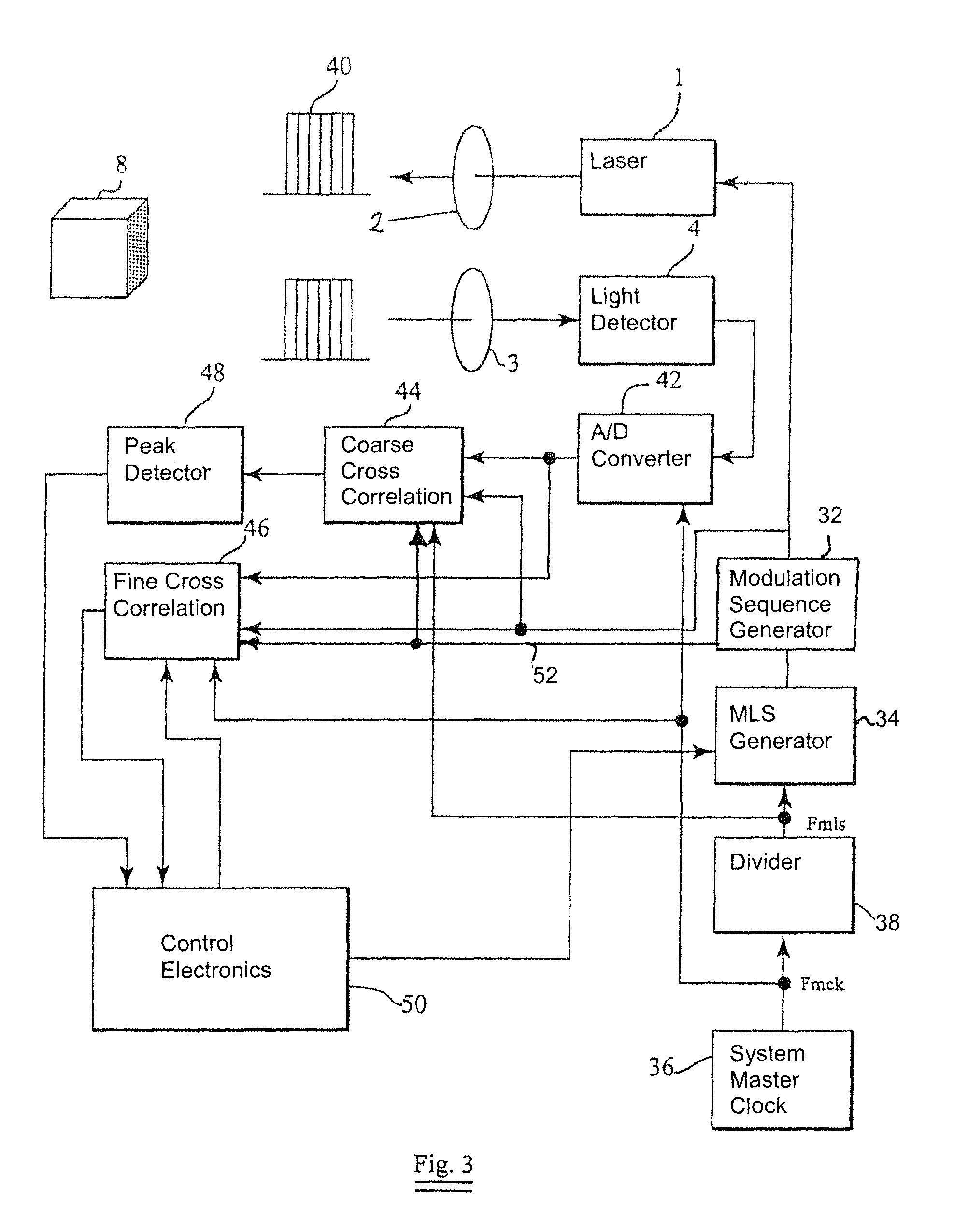Optical correlation apparatus and method
a technology of optical correlation and apparatus, applied in the direction of instruments, measurement devices, electromagnetic wave reradiation, etc., can solve the problems of reducing the ability of the system to discriminate between close objects, affecting the accuracy of the signal, so as to improve the signal to noise ratio, the effect of low cross-correlation and high autocorrelation
- Summary
- Abstract
- Description
- Claims
- Application Information
AI Technical Summary
Benefits of technology
Problems solved by technology
Method used
Image
Examples
Embodiment Construction
[0051]One example of how optical distance measurement equipment based on the MLS technique can be improved by using the invention is illustrated in FIG. 3. The system is incorporated in a vehicle.
[0052]A maximal length sequence generator 34 is connected to master clock generator 36 through divider 38. This divider 38 generates a MLS frequency that is a fraction of the master clock frequency, and the maximal length sequence generator generates a maximal length sequence.
[0053]The maximal length sequence generator is connected in turn to modulation sequence generator 32 that modifies the maximal length sequence to be one of a number of modulation sequences. The modulation sequence generator is connected to laser 1 which generates an optical signal through transmission optics 2.
[0054]Receiving optics 3 receives light and focuses it onto light sensitive detector 4, which in turn feeds the signal to analogue to digital converter 42. The digital output is fed to both a coarse and a fine cr...
PUM
 Login to View More
Login to View More Abstract
Description
Claims
Application Information
 Login to View More
Login to View More - R&D
- Intellectual Property
- Life Sciences
- Materials
- Tech Scout
- Unparalleled Data Quality
- Higher Quality Content
- 60% Fewer Hallucinations
Browse by: Latest US Patents, China's latest patents, Technical Efficacy Thesaurus, Application Domain, Technology Topic, Popular Technical Reports.
© 2025 PatSnap. All rights reserved.Legal|Privacy policy|Modern Slavery Act Transparency Statement|Sitemap|About US| Contact US: help@patsnap.com



